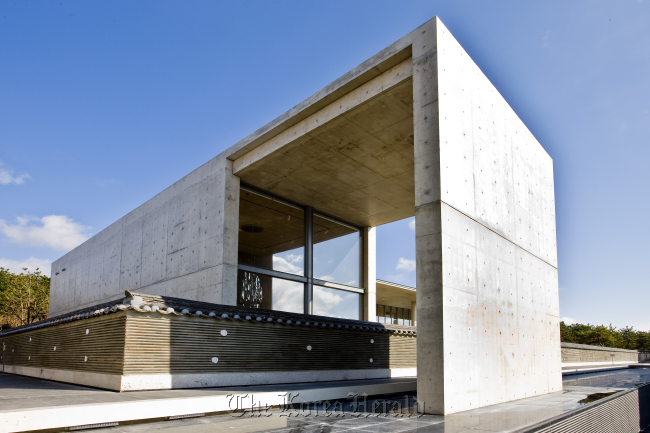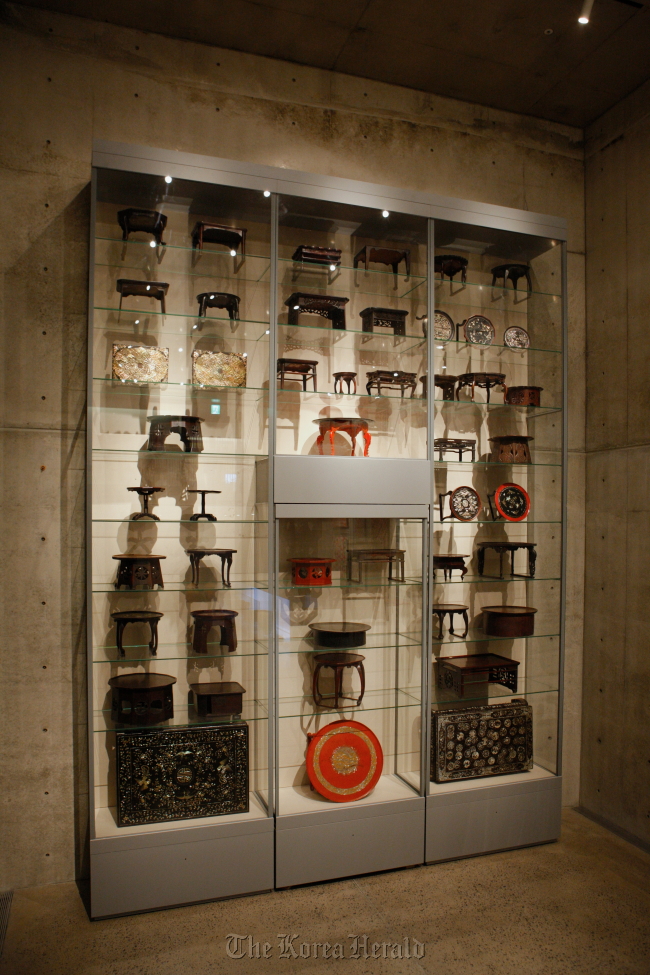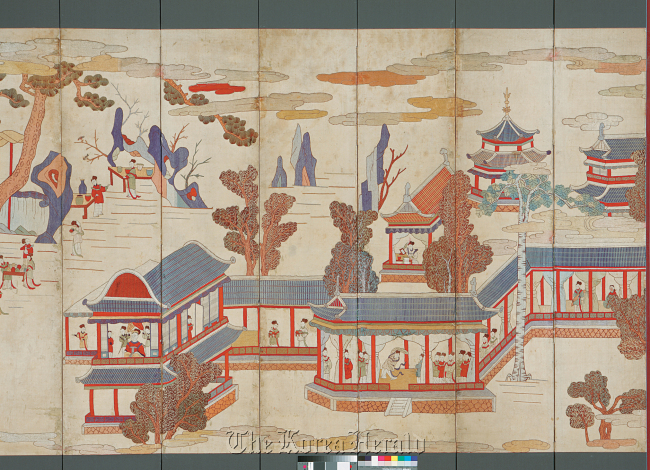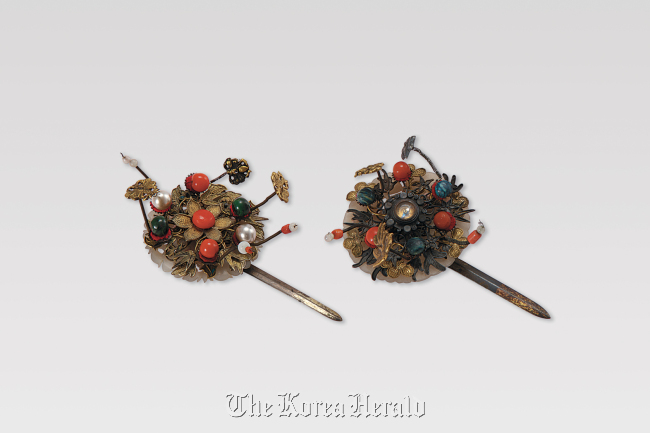In search of beauty on Jeju
Bonte Museum focuses on the colorful lives of late Joseon people
By Korea HeraldPublished : Jan. 22, 2013 - 18:59

Following is part of a series exploring unique museums, collections and the passionate collectors behind them. ― Ed.
Many people associate the Joseon era (1392-1910) with the color white. People often wore white outfits and enjoyed white on everything, garnering the moniker, “Baegeuiminjok (People in white clothes).” And the culture is often associated with words such as “humble” or “simple.”
At the Bonte Museum on Jeju Island, however, people will be able to learn more about the colorfulness of Joseon people in their everyday lives. Held under the theme of “In search of beauty,” the museum that opened in November on a mountainside on the southern island is determined to highlight what the upper class of the late Joseon period consumed through more than 1,500 items.
Many people associate the Joseon era (1392-1910) with the color white. People often wore white outfits and enjoyed white on everything, garnering the moniker, “Baegeuiminjok (People in white clothes).” And the culture is often associated with words such as “humble” or “simple.”
At the Bonte Museum on Jeju Island, however, people will be able to learn more about the colorfulness of Joseon people in their everyday lives. Held under the theme of “In search of beauty,” the museum that opened in November on a mountainside on the southern island is determined to highlight what the upper class of the late Joseon period consumed through more than 1,500 items.

Soban, surface and line
Among a total of 300 household goods exhibited for the opening exhibition, soban, or dining table, presents the essence of people during the period.
“Due to the Confucian culture people dined individually, which means that everyone had a dining table of his or her own. A family had a number of soban equal to or more than the number of its members, which is quite a lot,” said Kim Ah-young, curator of the museum.
Tables differed according to regions, occasions and users. Red or black-lacquered tables reflected aristocratic sophistication, often adorned with mother-of-pearl inlays. The commoners went for simpler and less refined versions.
“One thing for sure is that whether it was used for servants’ casual dinner or tea for wealthy ladies, soban was an intimate item for everyone,” Kim said.
“Soban consisted of line (the line of the table legs) and surface (the face of the table) and that’s it. Soban is neat and very regal, just like our ancestors,” Kim added.
Folding screen, wishing for longevity
Folding screens were placed in women’s chambers or men’s studies. They were mostly used for decoration purposes but also delivered special messages and wishes for longevity and success.
The “Embroidered folding screens of Guo Fenyang’s banquet” depicts a feast held by Guo Fenyang, a high-ranking Chinese official who often held lavish feasts that involved scores of servants and dozens of guests coming from all over the nation to flatter him. The embroidery of Guo Fenyang’s banquets was once fashionable among mothers hoping that their offspring would be as successful as the Chinese official.

One of the most popular pictures is the Sipjangsaeng, or the 10 auspicious creatures that represent longevity.
“It’s quite a universal thing to crave for a long and healthy life. These embroideries were quite expensive back then, but people didn’t seem to care,” Kim said.
Accessories and furniture
While the social life of Joseon women was very much restricted, life inside the house was quite colorful. They wore hairpins with jade and other valuable stones on them.

“For the wedding, the mothers would present a hand-made key holder with many holding spots wishing that their daughters would live with many keys ― in one word, wealth,” Kim explained.
After marriage, women kept their accessories or important belongings in well-crafted jewel boxes, and their bed linens in mother-of-pearl adorned closets and dishes in lacquered cupboards. Some of the shelves were decorated with bamboo cut vertically in half and attached to the surface.
One of the exhibited items is a box decorated with painted ox horn sheets. The center of the box is dented in the shape of a pillow. “It was actually used as a pillow,” Kim said. “Women used to keep their important keys of the house, warehouse and other facilities in the box and slept on it. It means that ‘when I sleep, you won’t be able to even see the valuables.’”
Of ordinary people
The collection was built by Lee Haeng-ja, the founder and advisor of the museum, widow of the late Hyundai scion Chung Mong-woo.
“The items were collected in Insa-dong, the famous antique and traditional goods stores cluster in central Seoul. They were handpicked by the collector and kept in a warehouse before the museum, designed by the internationally acclaimed Ando Tadao, was completed last year,” Kim said.
“We are now happy to finally present it to the people,” said Lim Hyun-jun, director of the museum.
■ bonte museum
● Adress: 380 Sancheon-ri, Andeok-myeon, Seogwipo, Jeju.
● Hours: 10 a.m.-- 5 p.m. on weekdays, 10 a.m. -- 6 p.m. on weekends
● Admission: Tickets are priced from 2,000 won (for Jeju residents only) to 10,000 won.
For more information, contact (064) 792-8108 or visit www.bontemuseum.com
By Bae Ji-sook (baejisook@heraldcorp.com)
-
Articles by Korea Herald



![[AtoZ into Korean mind] Humor in Korea: Navigating the line between what's funny and not](http://res.heraldm.com/phpwas/restmb_idxmake.php?idx=644&simg=/content/image/2024/04/22/20240422050642_0.jpg&u=)
![[Exclusive] Korean military set to ban iPhones over 'security' concerns](http://res.heraldm.com/phpwas/restmb_idxmake.php?idx=644&simg=/content/image/2024/04/23/20240423050599_0.jpg&u=20240423183955)



![[Graphic News] 77% of young Koreans still financially dependent](http://res.heraldm.com/phpwas/restmb_idxmake.php?idx=644&simg=/content/image/2024/04/22/20240422050762_0.gif&u=)

![[Herald Interview] Why Toss invited hackers to penetrate its system](http://res.heraldm.com/phpwas/restmb_idxmake.php?idx=644&simg=/content/image/2024/04/22/20240422050569_0.jpg&u=20240422150649)





![[Exclusive] Korean military to ban iPhones over security issues](http://res.heraldm.com/phpwas/restmb_idxmake.php?idx=652&simg=/content/image/2024/04/23/20240423050599_0.jpg&u=20240423183955)



![[Today’s K-pop] Ateez confirms US tour details](http://res.heraldm.com/phpwas/restmb_idxmake.php?idx=642&simg=/content/image/2024/04/23/20240423050700_0.jpg&u=)